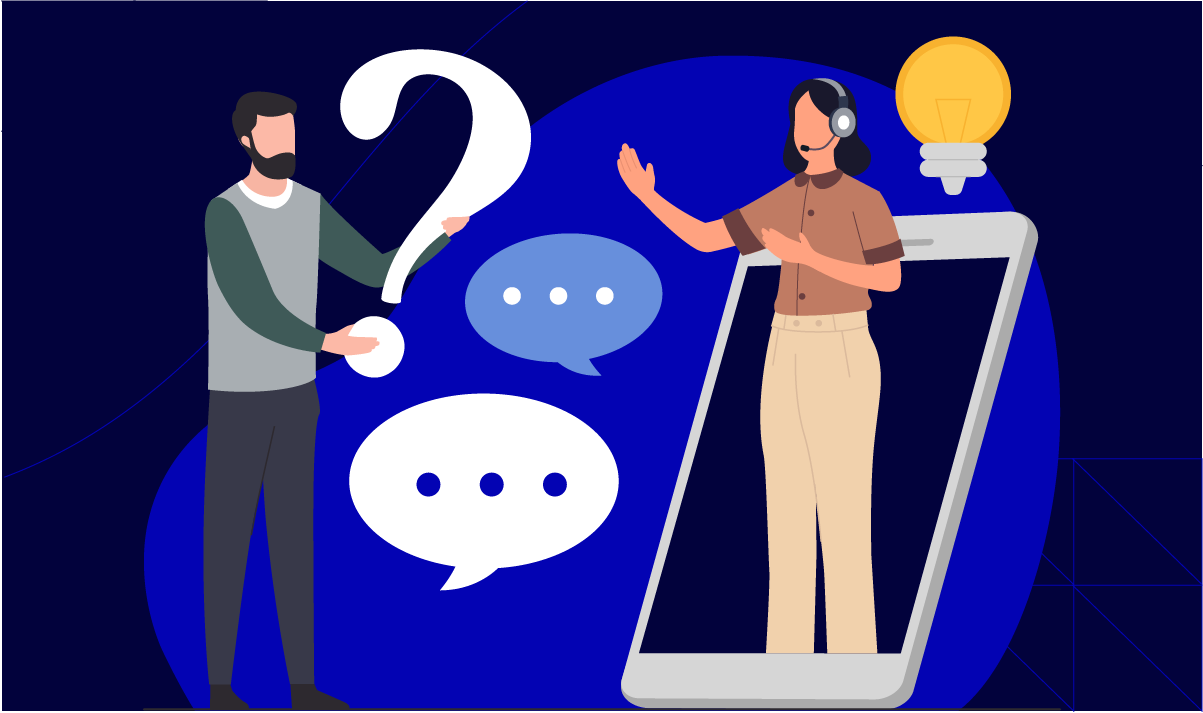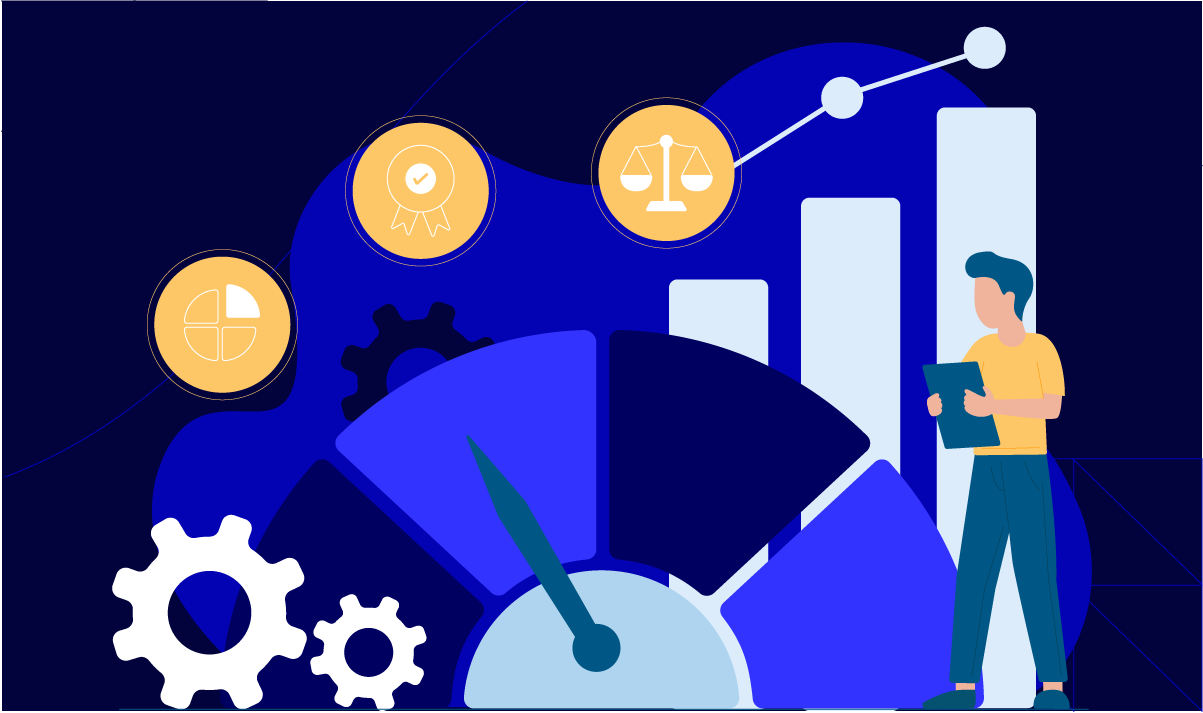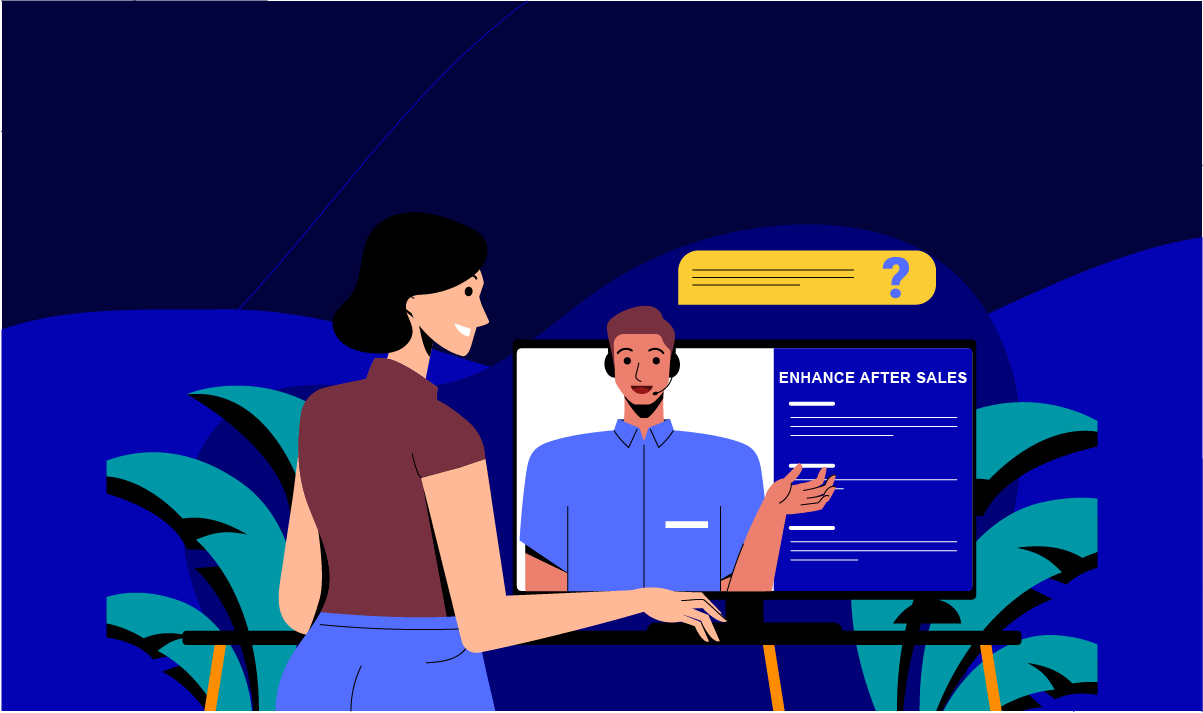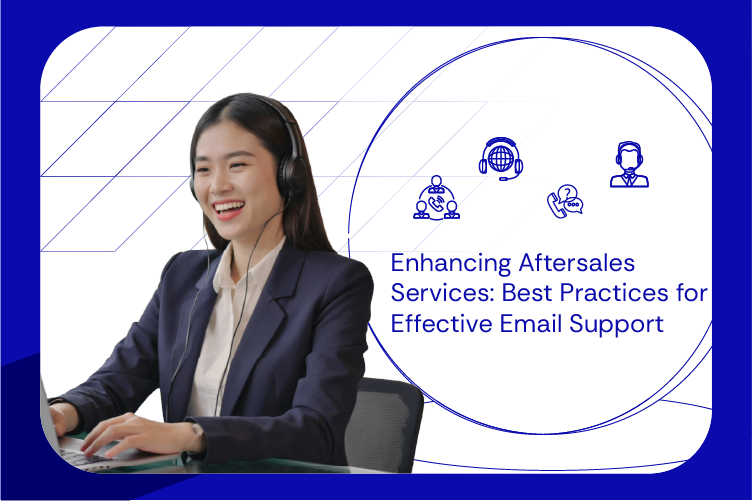After-sales service is the support provided to customers after they purchase a product or service. To enhance it, you can focus on personalization, faster response times and equipping your team with deep product and process knowledge. Also, you can professionally use emails to enhance customer satisfaction and drive repeat business. Additionally, leveraging data-driven CX tools and professional customer communications can significantly boost satisfaction and repeat business.
Customers don’t just buy products! They buy experiences.
In 2025, after-sales service is just as crucial as the initial sale. Studies show that 13% of dissatisfied customers will tell 15 or more people about their bad experience. Whereas, it takes 12 positive interactions to make up for one unresolved issue.
This clearly shows how your after-sales service response can make or break brand loyalty. So, how to improve it?
One of the most effective ways to enhance after-sales service is through consistent, thoughtful and humanized communication. When done right, email support can:
- Turn complaints into opportunities
- Keep customers loyal
- Even generate positive word-of-mouth
Curious to see how? In this article, we will learn how to handle customer complaints effectively via email. Also, we will understand what after-sales service is, how to measure it, and how you can enhance it for consumer and D2C brands.
What is After-sales Service?

After-sales service is the help, guidance and ongoing support provided to customers after a purchase. By providing good after-sales service, you can build customer loyalty and earn repeat business.
Let’s see what’s included in after-sales support:
| Types of After-Sales Support Services | Meaning |
| Technical Support | Helping customers resolve problems with the product. |
| Product Installation | Assisting with setting up or installing the product. |
| Troubleshooting | Identifying and solving issues. |
| Maintenance | Keeping the product in good working order. |
| Upgrades | Offering improvements or updates. |
| Returns/ Exchanges | Handling product returns or replacements. |
| Warranties | Covering repairs or replacements if the product has defects. |
| Onboarding | Helping new customers learn how to use the product. |
| Community Access | Connecting customers with a group of users for shared tips or experiences. |
| Self-Help Support | Providing guides or online resources to solve common issues. |
How to Measure After-Sales Service Quality?

To spot areas that need improvement in your after-sales support, you can track performance using clear metrics. These give you a clear picture of your after-sales service quality. Let’s understand them in detail:
1. Customer Satisfaction Score (CSAT)
CSAT tracks the satisfaction level of your customers with your service or product. The required information is gathered by sending a survey. In this survey, customers rate their satisfaction on a scale (like 1 to 5).
How To Use It?
- Send a short survey after a support interaction or purchase.
- The survey must ask the question, “How satisfied are you with our product or service?”
- Compare changes over time to identify satisfaction trends.
- This will let you see how happy your customers are with your after-sales service.
- Identify areas where satisfaction is low and take action to improve.
2. Net Promoter Score (NPS)
NPS determines the likelihood that your customers will suggest your business to others. It’s based on a simple question: “On a scale of 0 to 10, how likely are you to recommend us?”
How To Use It?
- Group responses into:
- Promoters (9-10)
- Passives (7-8)
- Detractors (0-6)
- Calculate NPS by subtracting the percentage of Detractors from Promoters.
- A high NPS means loyal customers, while a low score shows areas where you may need to improve.
- Use Detractor feedback to identify recurring friction points.
3. Repeat Purchase Rate
This metric is a strong indicator of customer loyalty! It shows how often customers return to buy from you again.
How To Use It?
- Track how many customers make repeat purchases in a given period.
- Use loyalty programs and personalized follow-ups to boost retention.
- If the rate is low, it may signal that your after-sales support needs improvement.
4. Customer Retention Rate (CRR)
CRR measures the percentage of customers who continue to do business with you over time.
How To Use It?
- Calculate CRR by comparing the number of returning customers at the “end of a period” to the number at the “start”.
- A high CRR shows your customers are satisfied and stick with you.
- A dip in retention suggests gaps in post-purchase communication or service.
- Ideally, you should use the data to improve follow-up processes or support after-sales service quality.
5. Average Resolution Time
This metric tracks how long it takes to resolve a customer issue or complaint when offering after-sales service.
How To Use It?
Measure the time between:
- When a problem is reported
- When it is resolved
- The shorter the time, the higher the satisfaction.
- Identify bottlenecks if resolution times are too long.
Want to Enhance Your After-Sales Service in 2025? 5 SureShot Tips You Can’t Ignore!

Studies show that acquiring a new customer can be up to 25 times higher than retaining existing customers. And, what’s worse? A customer is four times more likely to switch brands due to poor service than pricing issues.
Thus, in 2025, you can’t let your guard down by offering sub-par after-sales service!
That’s why forward-thinking CX leaders in D2C and consumer industries must prioritize seamless and empathetic post-purchase support. Below are five proven techniques that can help you:
1. “Talk The Talk” With Clear Communication
Communicate with your customers in a way they can easily understand. Whether you create a help page, FAQ, or product guide, use simple and dirct language.
Follow these tips:
- Break information into simple steps.
- Present data using bullets, tables, and charts.
- Use visuals (like images or videos) for better explanation.
After offering after-sales support, you must follow up. You can do this by:
- Sending an email
- Calling
- Using the same method they used to buy from you
- Follow up with customers via email or phone to confirm satisfaction.
2. Speed Matters! Be There When It Counts
Studies show that 72% of customers expect a response within 30 minutes of reaching out. Furthermore, most customers indicate that getting a response within 10 minutes of their request is highly appreciated.
Is your team this efficient? In 2025, if you can’t provide support 24/7, let customers know when they can expect help. Also, you can offer alternative support options (like a self-help page) while they wait.
But that’s temporary! Recommended Solution For Stronger After-Sales Service
If your internal team can’t handle 24/7 support, consider outsourcing to a trusted CX partner like Atidiv, which offers omnichannel support across voice, chat and email.
Recently, we partnered with the largest online tire retailer and handled 230,000+ tickets managed annually across multiple customer support channels. Interested in our services? Let’s talk!
Explore how we achieved 80% Time Savings, 50% Cost Reduction, and 99% Accuracy for an NYC Start-Up to understand the ROI of smart CX outsourcing.
3. Make Your Staff Product Gurus
Your support team must have 100% knowledge of your products and services. This will allow them to professionally handle different questions and problems.
How can you do so?
- Offer comprehensive training programs that cover:
- Product features
- Common issues
- Troubleshooting techniques
- Give a hands-on practice. Let your team use the products themselves.
- Keep your team informed about product changes and new features. You can update them through ongoing training and internal newsletters.
- Create a knowledge base (like an internal wiki) with:
- Detailed product information
- Troubleshooting guides
- FAQs
- Conduct mock customer interaction sessions.
- Reinforcing learning through peer coaching and data-backed insights.
Investing in knowledge management drives accuracy and confidence, much like Atidiv’s success in enabling $20M+ savings with 95%+ quality for a leading business aggregator through data-driven process optimization.
4. Let Your Customers Feel – “Made Just For You!”
Treat customers as individuals. Remember that personal touches can significantly enhance after-sales service quality. You can practice personalisation as follows:
- Recommending related products based on past purchases.
- Sending thank you notes or loyalty discounts after support resolutions.
- Following up after a purchase to get feedback.
- Grouping customers based on their buying habits to offer relevant deals or content.
- Segmenting customers by value, region or behavior to customize outreach.
5. Offer Anywhere, Anytime Support
Adopt omnichannel messaging solutions. This makes it easy for your customers to reach you through different channels, like:
- Social media (Instagram, Facebook, X)
- Phone
- SMS
- Messaging apps
To do this, you can use tools that gather all messages in one place. Alternatively, you can hire top call center outsourcing companies.
Did you know? 72% of consumers worldwide used email for a service interaction! This makes it the most-used channel for customer service, ahead of voice (68%) and live web chat (49%). In the next section, let’s study how you can use emails to professionally handle customer complaints.
Use integrated tools to centralize communication history and maintain context across platforms. Or partner with a reliable call-center outsourcing company like Atidiv for complete lifecycle management.
Our clients often realize up to 65% cost savings annually, as documented in this case study on $450K yearly savings and workforce optimization.
How To Handle Customer Complaints Effectively Via Email?

Email remains a cornerstone of after-sales communication, with 72% of customers preferring it over voice or chat. Effective complaint handling via email can increase engagement by up to 50%. Additionally, about 43% of sales professionals say that email is the most effective channel for after-sales support.
So, want to master it in 2025? Below are some ways you can use emails to better handle customer complaints and offer superior after-sales support:
1. Speak Like a Human, Not a Robot!
Most customers expect to communicate with a real person and not a machine! That’s because automated responses make them feel unimportant (particularly when they are already frustrated).
Follow these suggestions to personalise your email communications:
- Write your emails as if you are speaking directly to the customer. Use a friendly and personal tone.
- Use your name when signing off, rather than just “Support Team.”
- Acknowledge the customer’s problem. Show understanding rather than just stating facts.
- Avoid generic responses. Tailor each email based on the customer’s issue.
- Keep the language simple and conversational, but maintain professionalism.
2. Try to Use FAQ Articles in Emails
Sometimes customers contact you even when answers are available on your website. This can happen for two reasons:
- They couldn’t find the information
- They found it but didn’t understand it, or it didn’t solve their problem.
To enhance after-sales service quality, you can:
- Directly address the customer’s issue first, rather than just sending a link to the FAQ.
- Briefly explain the solution in the email itself.
- Include a link to a relevant FAQ or help article for more details.
- Let them know they can reach out again if the suggested solution doesn’t work.
- Ensure FAQ pages are clear, visual and searchable.
Most importantly, make sure your FAQ articles are clear and easy to follow (so customers don’t get frustrated).
3. Own the Oops! Apologise Right Away
If a mistake has been made, it’s important to own it! Apologising shows that you respect the customer’s experience and are committed to resolving the after-sales service complaint.
How Can You Do It Professionally?
- Start by acknowledging the problem and expressing empathy.
- Offer solutions or compensation when appropriate.
- Explain what went wrong briefly, if relevant.
- Tell customers what you are doing to correct it.
- Offer a solution or compensation if possible (like a refund or a discount).
4. Don’t Command By Using Imperatives!
Imperatives are direct commands like “Do this” or “Click that.” Using them can make your email sound bossy or rude. To boost after-sales service quality, you must use polite requests rather than commands.
Additionally,
- Phrase your instructions in a way that sounds helpful (not demanding).
- Avoid words like “must,” “should,” or “need to.”
- Instead, use phrases like “Could you please…” or “You might want to…”
By writing emails in this tone, your response feels more respectful and supportive. For example, instead of saying, “Click the link to update your details,” say, “Could you please click on the link to update your details?”
Want More Focus On Core Operations? Let Atidiv Handle 100% of Your Customer Support!

Great after-sales service is not just a responsibility it’s a profit driver. It’s an opportunity! By professionally handling customer complaints via email, you can turn complaints into positive experiences.
Remember to:
- Use a friendly tone
- Provide clear explanations
- Write personalised messages
- Deliver prompt responses
Finding after-sales service tough? Why not outsource 100% customer lifecycle to Atidiv? We at Atidiv are a leading CX specialist. Atidiv’s customer experience experts offer end-to-end customer support solutions, such as:
- Omnichannel messaging solutions
- Outsourcing email support services
- Voice customer care
- Social media support
- Live chat service for website
- Inbound call center services and outbound call center services
With over 15 years of experience and 70+ clients, partnering with Atidiv can let you enjoy cost-savings of up to 60%. Outsource your support department to Atidiv and experience the difference in 2025!
Built for scale. Driven by data. Proven by results.
FAQs On Aftersales Service
1. How can I make my customer support emails sound more human and less robotic?
To make your emails sound more human, write as if you are talking directly to the customer. Wherever possible, try to:
- Use a friendly and empathetic tone
- Avoid using technical jargon
Lastly, sign off with your name instead of just “Support Team.”
2. My customers’ complaints are usually rude or aggressive. How to handle it?
Please try to stay calm and professional. Begin by:
- Acknowledging their frustration
- Apologising (if necessary)
Most importantly, avoid matching their tone. Instead, offer a solution or next steps. Remember, customers are often upset because they feel unheard. By showing empathy and actively addressing their issue, you can defuse the situation and enhance your after-sales service quality.
3. How do I measure the effectiveness of my after-sales email support?
You can track these metrics:
- Customer Satisfaction Score (CSAT)
- Net Promoter Score (NPS)
- Average Resolution Time
Also, analyse repeat purchase rates and customer retention to see if your email support is building loyalty.

